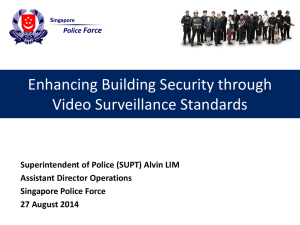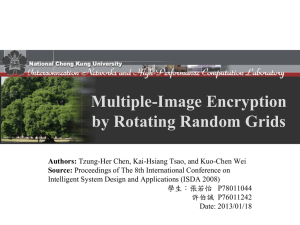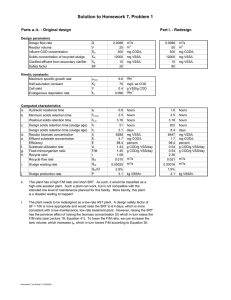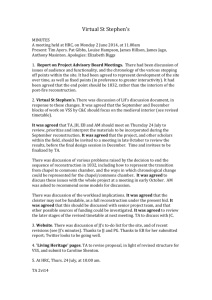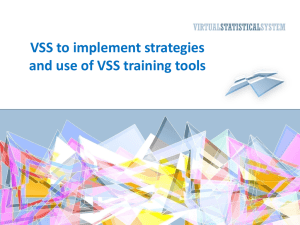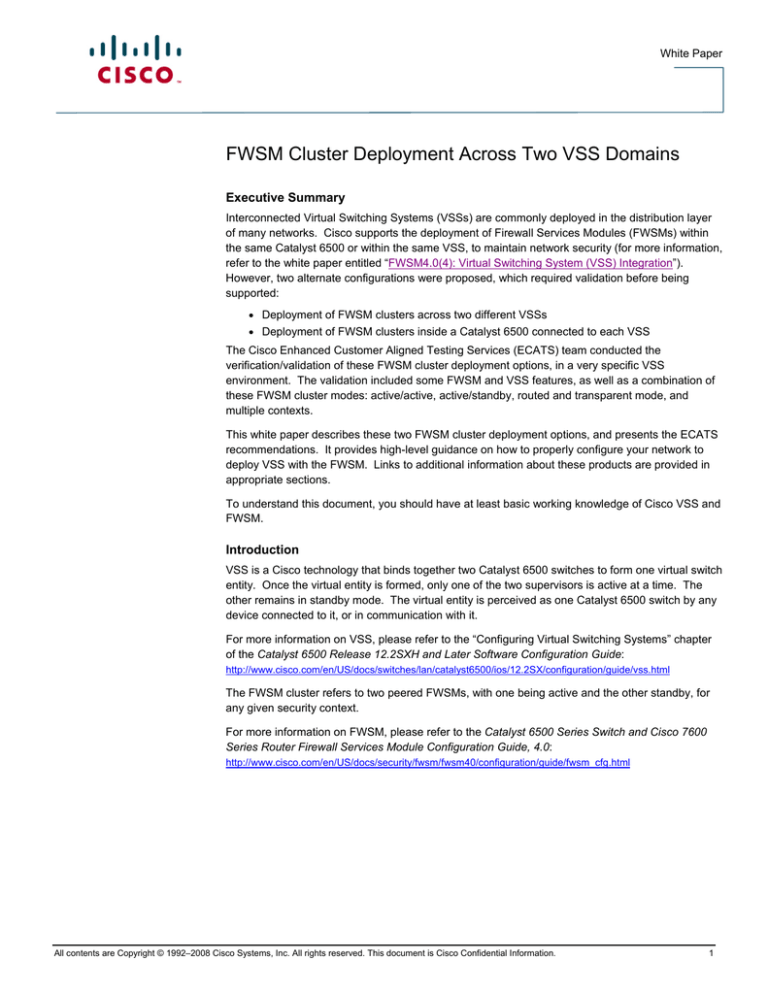
White Paper
FWSM Cluster Deployment Across Two VSS Domains
Executive Summary
Interconnected Virtual Switching Systems (VSSs) are commonly deployed in the distribution layer
of many networks. Cisco supports the deployment of Firewall Services Modules (FWSMs) within
the same Catalyst 6500 or within the same VSS, to maintain network security (for more information,
refer to the white paper entitled “FWSM4.0(4): Virtual Switching System (VSS) Integration”).
However, two alternate configurations were proposed, which required validation before being
supported:
●
●
Deployment of FWSM clusters across two different VSSs
Deployment of FWSM clusters inside a Catalyst 6500 connected to each VSS
The Cisco Enhanced Customer Aligned Testing Services (ECATS) team conducted the
verification/validation of these FWSM cluster deployment options, in a very specific VSS
environment. The validation included some FWSM and VSS features, as well as a combination of
these FWSM cluster modes: active/active, active/standby, routed and transparent mode, and
multiple contexts.
This white paper describes these two FWSM cluster deployment options, and presents the ECATS
recommendations. It provides high-level guidance on how to properly configure your network to
deploy VSS with the FWSM. Links to additional information about these products are provided in
appropriate sections.
To understand this document, you should have at least basic working knowledge of Cisco VSS and
FWSM.
Introduction
VSS is a Cisco technology that binds together two Catalyst 6500 switches to form one virtual switch
entity. Once the virtual entity is formed, only one of the two supervisors is active at a time. The
other remains in standby mode. The virtual entity is perceived as one Catalyst 6500 switch by any
device connected to it, or in communication with it.
For more information on VSS, please refer to the “Configuring Virtual Switching Systems” chapter
of the Catalyst 6500 Release 12.2SXH and Later Software Configuration Guide:
http://www.cisco.com/en/US/docs/switches/lan/catalyst6500/ios/12.2SX/configuration/guide/vss.html
The FWSM cluster refers to two peered FWSMs, with one being active and the other standby, for
any given security context.
For more information on FWSM, please refer to the Catalyst 6500 Series Switch and Cisco 7600
Series Router Firewall Services Module Configuration Guide, 4.0:
http://www.cisco.com/en/US/docs/security/fwsm/fwsm40/configuration/guide/fwsm_cfg.html
All contents are Copyright © 1992–2008 Cisco Systems, Inc. All rights reserved. This document is Cisco Confidential Information.
1
White Paper
Figure 1 depicts a typical VSS environment where an FWSM cluster needs to be deployed. Each
data center (DC) has one VSS, which is connected to the core, to the DC’s related access, and to
the other DC’s VSS. The term “VSS domain” used in this document refers to the DC.
Figure 1 – Typical VSS Environment
There are two ways to add a level of security to this environment. Figure 2 depicts the first
deployment option. The FWSM cluster is deployed across the two VSS domains inside the VSS
chassis (switch 1 or switch 2).
Figure 2 –VSS Deployment Option 1
All contents are Copyright © 1992–2010 Cisco Systems, Inc. All rights reserved. This document is Cisco Confidential Information.
2
White Paper
Figure 3 depicts the second deployment option. The FWSM cluster is deployed across two VSS
domains inside two Catalyst 6500 service switches (SS), each connected to a VSS as shown. This
method can be used if you don’t want to place the FWSM inside the VSS chassis.
Figure 3 –VSS Deployment Option 2
Once deployed inside the chassis using either of the above options (VSS or SS), the FWSM cluster
can then be configured for a single context, for multiple contexts, for active/standby or active/active
mode, for transparent mode, or for routed mode.
The advantages or disadvantages of each the above deployment options are beyond the scope of
this document.
Configuration Guidelines
The interaction of technologies and devices in any VSS/FWSM environment must be carefully
planned and tuned. The location of the primary FWSM for any given security context or a group of
security contexts is pivotal for this planning and the tuning. The following subsections describe the
fundamental characteristics of these devices and technologies.
VSS Characteristics
The VSS is the essential part of this environment, and its configuration should be appropriately
executed to guarantee a successful deployment. Apart from the standard VSS configuration
guidelines (which can be found using the link provided in the “Introduction” section), there are two
configuration guidelines that are strongly recommended:
●
●
A dual-active detection mechanism must be configured. This mechanism prevents both
VSS chassis from becoming active in the event of the VSL links’ failure. Dual active can
cause serious and severe network instabilities and disruptions. It mitigates network
instabilities and disruptions by securely isolating one of the two chassis, and by ensuring an
automatic recovery as soon as the VSL links recover. The dual-active detection mechanism
implemented during the testing was the fast-hello, which is strongly recommended by Cisco.
For more information on dual active documentation and configuration, refer to the “DualActive Detection” section of the Catalyst 6500 Release 12.2SXH and Later Software
Configuration Guide:
http://www.cisco.com/en/US/docs/switches/lan/catalyst6500/ios/12.2SX/configuration/guide/
vss.html#wp1063718.
It is recommended that VSS preemption not be used in this environment as its process
causes outage and possible instabilities. (VSS preemption will be deprecated soon.)
All contents are Copyright © 1992–2010 Cisco Systems, Inc. All rights reserved. This document is Cisco Confidential Information.
3
White Paper
FWSM Characteristics and Location
The FWSM is the key element of this deployment, as it supervises all the traffic going in and out
through this environment. Its location and configuration are crucial, as the overall deployment
configuration flows from it.
With no FWSM preemption enabled, it is difficult to locate and control the position of the active
FWSM unit for any given security context, with obvious consequences to the overall environment’s
configuration. FWSM preemption makes that location and control more predictable. It is therefore
imperative to configure FWSM preemption in order to deploy a FWSM cluster in this environment.
This will then help to build a more accurate and stable configuration for the environment, especially
in the areas of Spanning Tree Protocol (STP), Hot Standby Router Protocol (HSRP), and routing.
STP
RSTP (Rapid Spanning-Tree Protocol) was used during the testing. The VSS located in the VSS
domain with the active FWSM for a security context should be the STP root primary for all the
VLANS pertaining to that security context. The other VSS should be the STP root secondary.
Note:
The above STP priority guidelines on the VSS should be the same whether the FWSM
cluster is deployed in the VSS or in the SS. When the FWSM cluster is deployed in the
SS, all the VLANs’ STP priority should be left as default in the SS.
HSRP
The SVI interface (in the same VLAN as the outside VLAN of the security context) in the VSS
located in the VSS domain containing the active FWSM for a particular security context should be
HSRP active. The corresponding SVI configured in the other VSS must be HSRP standby.
Note:
It is important to mention that when the FWSM cluster is deployed in the SS, the above
HSRP guidelines remain the same. No SVI (related to security contexts) should be
configured on the SS, which is purely a Layer 2 device.
Routing
At the time of the validation/verification, OSPF was used as the routing protocol between the core
and the two VSS domains, with no adjacency between the VSS domains.
Note:
It is important to mention that the above result can be achieved using a routing protocol
other than OSPF, as long as the implemented design guarantees a traffic flow similar to
the one described here.
All the subnets related to the SVI interfaces (in the same VLAN as the outside VLAN of the security
context) in both VSS domains should be advertised in OSPF to the core. Each SVI interface should
be configured with an adapted OSPF cost, to ensure that the traffic from the core to a particular
security context is sent to the correct VSS domain (where the active FWSM unit for that security
context is located). The SVI on the VSS domain with the active FWSM for a particular security
context should be configured with a lower OSPF cost than the SVI in the other VSS domain. The
redistribution metric must also be lower on the VSS with the active FWSM for a particular security
context, than that on the other VSS.
When static routing is used in routed mode, the default routes configured in the FWSM must point
to the HSRP virtual IP addresses on the VSS. The static routes configured on the VSS to reach the
inside subnet of each security context must also point to the FWSM outside IP address.
The above can be achieved with only one OSPF process for a FWSM cluster in active/standby
mode. However, two OSPF processes are needed for a FWSM cluster in active/active mode, one
per FWSM security context group.
All contents are Copyright © 1992–2010 Cisco Systems, Inc. All rights reserved. This document is Cisco Confidential Information.
4
White Paper
When the FWSM cluster operates in transparent mode, there is no need to configure static routes
either in the VSS or in the FWSM (unless for FWSM management). This is because both the inside
and the outside VLANs share the same subnet, although they have different VLAN IDs.
Both access lists and route maps were used during the validation for redistributing the static routes
into OSPF. These routes pointed to the inside subnet of each context.
The table below shows the STP priority, HSRP priority, OSPF cost, and OSPF redistribution metric
used in the testing.
FWSM
Cluster Mode
A/S
A/A
FWSM
Location
Active in VSS1
STP Priority /HSRP Priority/ Interface OSPF Cost and
Redistribution Metric in OSPF – OSPF process ID
Primary/120/9/ - 100
Standby in VSS2
Secondary/90/19/ - 100
Group 1 active in
VSS1
Primary/120/9/ - 100
Group 1 standby in
VSS2
Secondary/90/19/ - 100
Group 2 standby in
VSS1
Secondary/90/19/ - 200
Group 2 active in
VSS2
Primary/120/9/ - 200
Conclusion and Recommendations
Based on the results of the testing, the ECATS Team has made the following recommendations:
1.
Connection between the core and each VSS chassis. It is recommended to have two
links between the core and the VSS chassis, rather than a lone connection to the core.
The second link provides redundancy in the event of a failover (which require the reload of
one of the chassis), or in the event of the unavailability of the one of the chassis.
2.
OSPF configuration tuning. It is more efficient to adapt the OSPF configuration to take
into account the configured FWSM active default location, and to have the ingress and
egress traffic routed accordingly.
3.
Dual active detection on the VSS. It is highly recommended to have a dual active
detection mechanism that appropriately and efficiently handles the VSS behavior in the
event of the VSL link’s failure and recovery. Cisco recommends the fast-hello dual active
detection mechanism. (This was not implemented for the testing phase.)
4.
No VSS preemption. This should reduce the outage of the VSS chassis. Preemption will
not be supported in later versions of the code.
5.
FWSM preemption. This guarantees that the primary FWSM unit for a particular security
context will return to the active role in the event of an unexpected failover (preemption will
not be triggered if failover is triggered manually with the following CLI:“<no> failover active
<group 1/2>”).
All contents are Copyright © 1992–2010 Cisco Systems, Inc. All rights reserved. This document is Cisco Confidential Information.
5
White Paper
Hardware and Software Requirements
Observe the following:
1.
Cisco IOS Software Release 12.2(33)SXI(3) (minimum) is required.
2.
FWSM4.0(7) (minimum) is required.
Acronyms
A/S
Active/Standby
A/A
Active/Active
DC
Data Center
ECATS
Enhanced Customer Aligned Testing Services
FWSM
Firewall Services Module
HSRP
Hot Standby Router Protocol
NAT
Network Address Translation
OSPF
Open Shortest Path First
SS
Standalone/Service Switch
RSTP
Rapid Spanning Tree Protocol
SVI
Switch Virtual Interface
VSS
Virtual Switching System
VLAN
Virtual Local Area Network
VSL
Virtual Switching Link
All contents are Copyright © 1992–2010 Cisco Systems, Inc. All rights reserved. This document is Cisco Confidential Information.
6


